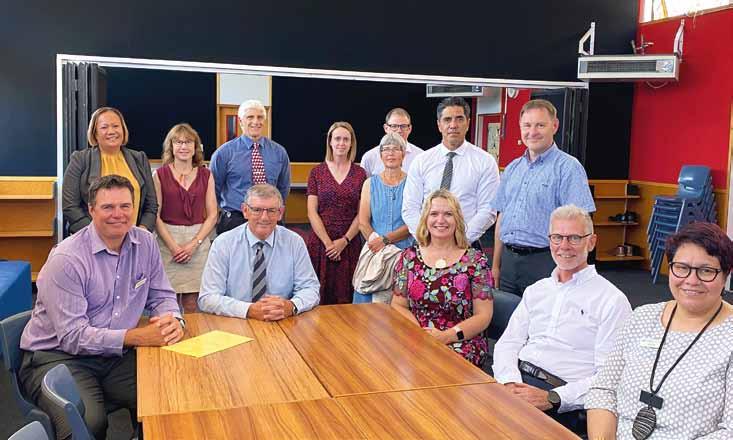
25 minute read
a NEw MODEL TO EvaLuaTE SchOOLS
a nEw Mod schools El to EvaluatE
Nicholas Pole Ero chiEF ExEcutivE
associate Education Minister Jan Tinetti, seated third from left, with the hillcrest high School and ErO leadership teams: Principal kelvin whiting is seated second from left, and ErO evaluation partner Neil harray is seated first on the left
2021 brINgS a big year for the Education Review Office, and for the sector. Under our new Operating Model, ERO is delivering major changes in the way we work with schools through shifting from event-based external reviews to supporting each school in a process of continuous improvement.
This is the year that the rubber hits the road – when we move from the concept of the new schools Operating Model to reality.
In moving to a new way of working, we will be building longterm relationships with schools. We are responding to what the sector has long asked for, as well as the way ERO itself has been wanting to work with schools.
This new approach is responsive to the needs of ALL involved in the sector, and we are keenly aware of our responsibility to make it work – for every learner in Aotearoa. It will have its challenges, but with challenge comes opportunity and I feel privileged to be part of the most exciting opportunity in ERO’s history.
what is the new Operating Model? This more differentiated approach will use a developmental evaluation that reflects individual schools’ context, culture and needs. It aims to strengthen the capability of all schools through embedding a continuous improvement approach, strengthening schools’ own engagement with and accountability to whānau.
An ERO evaluation partner will work alongside each school, to build a professional relationship with each school over time. The model allows us to better align the particular strengths of our evaluation partners to each school and principal.
The evaluation partner will have a focus on connecting with each school’s strategic planning and reporting cycle as part of an ongoing improvement journey. S/he will support schools to build and sustain high-quality evaluation as part of their planning for improvement focus.
Consideration of a school within its wider network and community is woven throughout the new Operating Model, which will also identify an opportunity to undertake evaluations at a community level.
ERO will become an evaluation partner, to support every school to be a great school and every child a success.
we are listening and learning In a test and learn approach starting in Term 4 last year, we
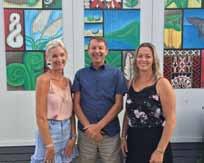
have been piloting our new model with 75 schools from across to be a pilot school’. New Zealand. Under this new approach, Hillcrest has been partnered with
We are including schools of varying sizes and types, to achieve ERO’s Neil Harray, who has made several visits. ‘It is a much a cross-section of the New Zealand school system. This is more positive way of working and developing the relationship,’ allowing us to learn as we go and gain real-time feedback from Kelvin says. ‘Previously, ERO told us what we needed to improve schools and our evaluators. ERO’s approach to the development this is allowing us on – but couldn’t tell us how to do that’. Developing the relationship and partnership of the model is iterative – if issues arise, adjustments can be made along the way to LEARN AS wE GO under the new Operating Model with ERO is a lot more beneficial than ERO and a bunch during the implementation phase. Key sector stakeholder groups are working with us to provide feedback loops. and gain REAL-TIME FEEdbACk from of strangers coming in for two weeks, running a ruler over the school, then writing a report and heading off. ERO staff continue to work hard around the country to engage with the sector on our new schools and our ‘The new Operating Model builds on our annual and strategic plans, the work we’ve model, to listen and to act on the feedback received. evaluators. already done’. Neil has helped us to focus on some different ways to evaluate our annual
We have encouraged principals to ask challenging questions, as plan, and prioritise our areas of focus’. For example, we have it is these questions that will help us to refine our implementation always analysed our student achievement data. As a result of the process and continue to improve. 2018 (our previous) review, we are using our data better now – we previously hadn’t used that enough to understand the children Feedback from a pilot school who were failing and why. ERO brings a different lens – it sees We began 2021 with a visit from Associate Education Minister things that the school doesn’t see, and its reporting is a mandate Jan Tinetti, and took the opportunity to take the Minister on a for us to make changes too. visit to one of the schools that is working alongside us in piloting ‘What all schools want is to do their job better. Having an the new model. Hillcrest High School Principal Kelvin Whiting evaluation partner and that longer-term relationship will help was very open in sharing with the Minister that reviews under to build trust and the partnership. It will enable both parties to ERO’s previous way of working ‘could be tough going’, took have an honest and shared conversation. We are moving from a lot of organising and extra work for staff – and that he was what was previously a one-dimensional to a now more holistic sometimes glad to see the back of us. I know that a lot of schools picture. It is the way forward.’ will agree! However, he also told us that he ‘jumped at the chance
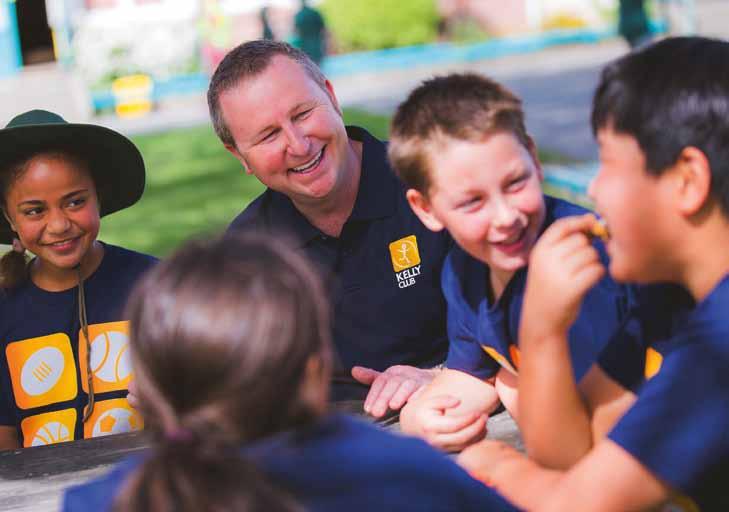
we are in the waka together This is a new way of working that demands significant change of us all, and ERO is committed to showing schools that we’re working in a way that helps them to achieve better outcomes.
Along with the Principals’ Federation, we share a commitment to put the learner at the centre, to equity and excellence in outcomes for all learners, and an understanding that quality education is a right for every New Zealand child and young person.
We are hopeful that the sector sees the opportunity, value and the potential that the new model will deliver, and we look forward to working with you.
ko te Tamaiti te Pūtake o te kaupapa: The Child – the Heart of the Matter For more information, visit: New Schools Operating Model | Education Review Office (ero.govt.nz)
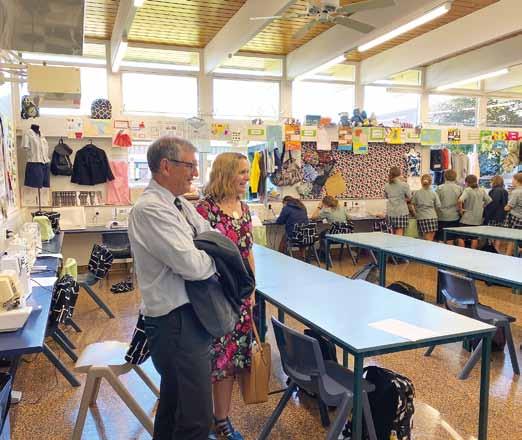
associate Education Minister Jan Tinetti takes a tour of hillcrest high School in hamilton with Principal kelvin whiting
INNOVATIVE SCHOOL OUTDOOR COVERS
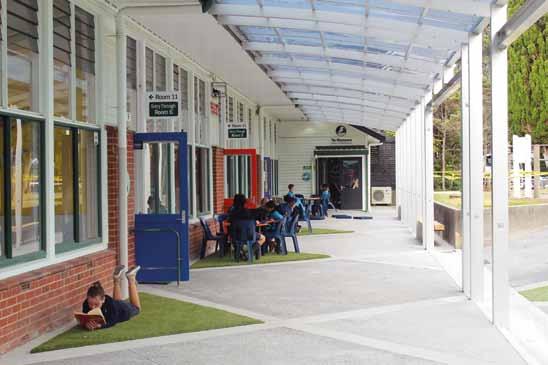
Blockhouse Bay Primary
UNIQUE | AFFORDABLE | SAFE SOLUTIONS
EMAIL TODAY | mark@uniport.co.nz | 0800 864 767 | www.uniport.co.nz
“The fi nished Uniport verandahs have exceeded our expectations for our school supplying both cooling and shade as well as learning, play, and lunch areas. I would unreservedly recommend Uniport to any school that is looking to get more use from an area in an aesthetically pleasing way. Neil Robinson, Principal, Blockhouse Bay Primary • Protect Students / Staff all year round • Extend your usable classroom learning space • School shelters, classroom verandahs & more • NZ Engineered robust & strong, with solid roofing • Nationwide Installation
STAKKI
The chair for a new age
DESIGNED BY MARTIN BALLENDAT

Cobalt Traffic Red Midnight Lime
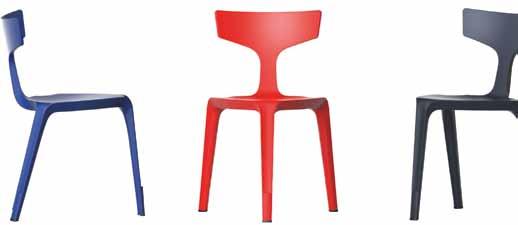
A minimal three-legged design, with a basic triangular shape manufactured from extremely durable glass-fiber reinforced polypropylene. Designer Martin Ballendat has created an iconic chair which is both visually and functionally unique, individual and absolutely unmistakable.
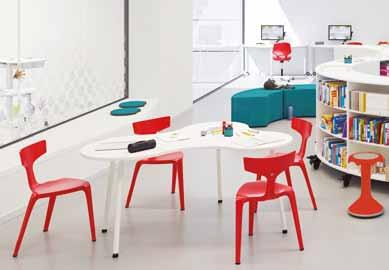
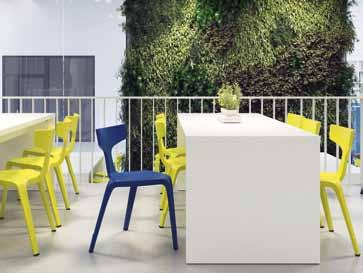
Stakki is extremely lightweight and easy to handle. It is an ideal chair for creative and flexible spaces, libraries and resource centres as well as school outdoor areas.
The Stakki stands firmly on its own three feet. Despite weighing only four kilograms, the design offers a very high level of stability. Its basic triangular form permits spacesaving arrangements that leave the greatest possible freedom of movement for the legs. What is the right way to sit on a chair with a triangular seat surface? Whatever way you like! You can sit down on Stakki from all sides in equal comfort and ergonomics. The chair seat has a small surface, but it is exactly the right amount to ensure all-round sitting comfort. Stakki has been comprehensively tested and carries the GS “tested safety” label. It has been certified for indoor and outdoor use, and has scored top marks on the lightfastness test, which evaluates the color-fastness of a material against the influence of light.
Maximum stacking quantity: 10 chairs.
When seen from above, the Stakki chair looks like a graphically reduced symbol.
Step-shaped glide elements act as spacers and provide protection for the seat surfaces when the chairs are stacked.
This is ensured by anti-slip, floor-protecting 2-component universal glides, suitable for all common floor coverings.
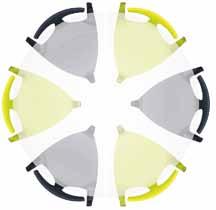
Takes up little space and can be easily pushed together like the slices of a cake.
Seat dimensions w·h·d: 437·460·378 Overall dimensions w·h·d: 537·776·553 Weight 4kg
Phone 0800 1 96637 Fax 0800 2 96637 Email sales@woodsfurniturenz.co.nz www.woodsfurniturenz.co.nz
rEgEnEration oF waiMairi school history – thE
Liz hawes Editor
IT waS ESPEcIaLLy uplifting to visit Waimairi School in features of the surrounding environment. These factors, along Christchurch and see how a natural disaster was able to generate with curriculum imperatives, have become the driving force reflection on the past to guide a vision for the future. The 2011 behind the rebuild. Christchurch earthquake decimated the school which required Principal Mike Anderson explained how the cultural narrative a complete rebuild. In consultation has translated into the planning of the with their local iwi, Ngāi Tahu, the school’s redevelopment. school community and staff set out to ‘The plant and bird species of our place plan a new learning environment that are now incorporated into the interior reflected the history, especially the design of our new building and the cultural history, of the area and the land children all understand the backstories it occupied. This process resulted in a to the names of their classrooms and the cultural narrative, gifted to the school by different break out areas,’ he said. Ngāi Tahu, giving deep and thoughtful The native fauna and flora and meaning to guide the redevelopment of geographical features are also reflected the school. The narrative highlights significant waterways and local plant, bird and fish and this is what can be achieved in the senior school – an example of detail, sequencing and quality in the colour palette of soft greens, greys, lavender and brown in the foyer, the wall coverings and the outside of the species. It also highlights characteristics buildings. which have influenced a set of values and beliefs, which the ‘Historically, this was a swampy area with streams and school has adopted, and provides a history of the geographical springs, native birds and trees,’ explains Mike, ‘so this history is Serious teaching time

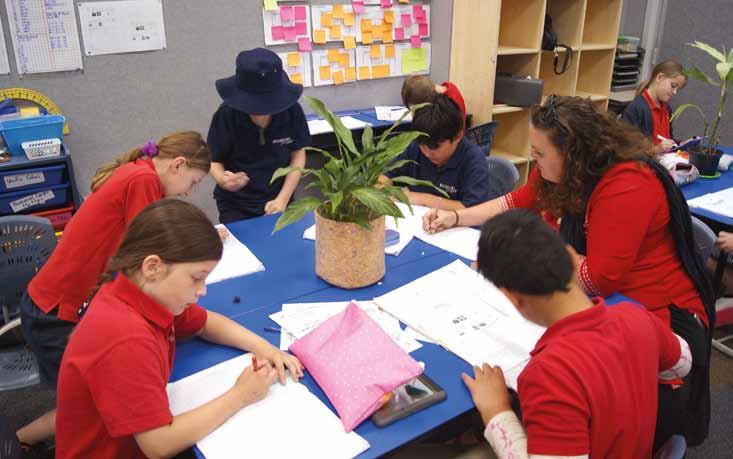
story oF
incorporated into the colour palette we have chosen.’
Wall designs and learning spaces celebrate Tī Kōuka, Pātiki, Kānuka, Kōtare, Kererū, Ῑnaka and Wai iti which the cultural narrative identifies as indigenous to the area.
‘It was important to us that our redeveloped school reflected not just a regeneration of the broken landscape resulting from the earthquake, but also how it was historically, before the school was originally built,’ he said.
Bulldozers on the school site are a continual reminder of the natural event that destroyed the old school. From the rebuilt school, children can watch the old buildings being torn down and resulting rubble removed yet know that its history and memories are not forgotten. For example, the bulldozers carefully circumvent a very beautiful “Umbrella Tree”, a memorial to Victoria Guest, a former student of the school. ‘Victoria will never be forgotten by our school community,’ says Mike.
Planning of the school’s design was not rushed. ‘We took six years to get it right,’ said Mike. ‘We used the torn down, partially wrecked areas of the school in which to recreate prototype spaces, quite literally using, commercial cardboard cut outs,’ he said. ‘We wanted to ensure high functionality and flexibility as well as creating a design to suit the pedagogical imperatives which we had already been working on before the earthquake struck,’ he said.
To a large extent, the earthquake exposed the original geography of the school grounds and surrounding community. ‘The damage underground was phenomenal,’ said Mike. ‘A scar appeared right across our rugby field – and continued for some distance beyond the school – then filled with water and liquefaction. The land dropped 20 centimetres and we literally had to pump the sewage uphill to the street level with the help of electric pumps. What we now know is that historically there was a river under there. When the settlers established farms, they just filled in these creeks and rivers and by the 1930s, urbanisation took hold. The force of the earthquake has exposed those original features,’ he said.
One important characteristic of Waimairi School is its pūmanawatanga. It has always functioned as the heart of the community and even at weekends is a busy place.
‘We needed a central gathering place so we designed the main entrance, library and administration area to include a Café,’ said Mike. ‘The Four Rivers Café runs as a business but is not there for financial profitability so much as to generate relationship capital,’
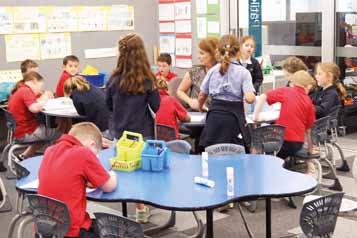
One group undertakes concentrated teaching whilst another works individually Principal Mike anderson with his trusted calming dog, Murphy
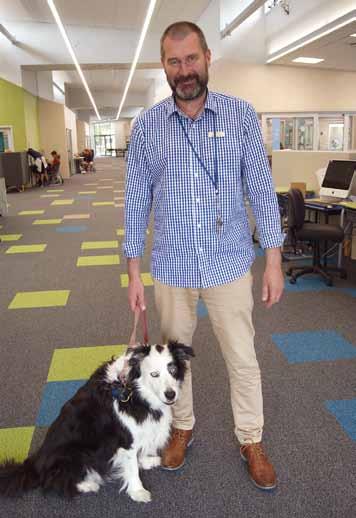

The umbrella tree is carefully safeguarded in memory of former student, victoria guest
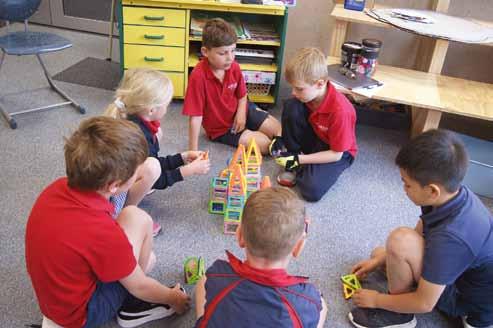
building structures together brings everyone’s ideas to the task Learning neighbourhoods have adopted the names of fauna and flora indigenous to the area

he said. ‘The café employs two staff and has become a gathering place for parents and their pre-schoolers as they drop off their school aged children. Staff and local residents also use the café, so it is a community facility as much as anything,’ he said.
Another popular space is the school library which many community groups have traditionally hired outside of school hours.
‘We designed the library for easy access and flexibility so it can be turned into many different configurations,’ said Mike. ‘All the book stacks are on wheels for easy manoeuvrability and we have ample spare seating for larger groups, such as Church groups,’ he said.
In all design decisions, there are compromises to be made. That is where consensus around broad principles is so important – to guide decisions. For Mike’s school community, it was easy. The children and their learning come first. Space is not infinite and must be tailored so that it generates the best outcomes for learning.
‘You will see that we have limited administration space and our staff room is not expansive,’ he said. ‘That is a deliberate decision, supported by the school community and staff,’ he said, ‘because we recognise that we want the very best teaching spaces and we want them to be as purposeful as possible.’
‘We are so fortunate,’ said Mike, ‘that we have been able to design a learning environment consistent with our pedagogy. We wanted flexibility within the learning spaces, we wanted openness – so that the outside and inside converge, and we wanted the ability to work in large and small groups, without any one group impinging on another.’
Apart from the junior area, which remains separate, the rest of the 300+ children are all under one roof. Yet it is a feeling of tranquillity and calmness that sweeps over you as you enter the main block, with its wide walkway and seeming lack of doors or barriers.
‘This is where acoustics come into play,’ explains Mike. ‘It is a deliberate element in the design as is the extensive use of glazing – emphasising the relationship between learning and the environment.’
None of these decisions came about by accident. After the earthquake it was well known that the school would be in line for a rebuild. With work on refreshing the school curriculum already begun, Mike saw an opportunity to plan the rebuild
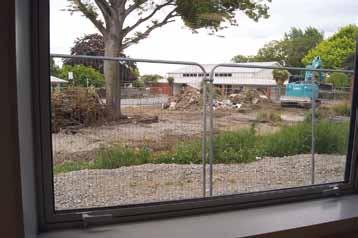
The children can observe the bulldozers at work as they demolish the old school, but not the old memories The Junior area remains separate from the main school


all the library stacks are mobile so the space can be arranged in different configurations Individual assessment alongside group work in the lounge space
from the curriculum up.
‘The staff raised funds to support fifty staff, including the caretaker, to go to Australia on a study trip. This was about opening everyone’s mind and learning from the expert, Dr Julia Atkin, about how to make meaningful change and link learning with the environment,’ said Mike.
The group not only heard from Dr Atkin, who became a critical friend for the curriculum refresh and vision for the school, but also visited a variety of other schools in the State of Victoria that were different from typical New Zealand schools. This helped inform possibilities for Waimairi School’s redevelopment.
Whilst Dr Atkin provided the research evidence and guidance to support the pedagogical vision for the school, ‘It was Mary Featherston, another Australian, who led us to recognise the transformative power of architecture,’ said Mike. ‘We recognised the importance of the physical environment in providing multiple contexts for learning, so getting the interior design right was really important to us,’ he said.
‘The education brief described the settings and then we began work on designing our prototypes,’ said Mike. This is where the cardboard cut-outs came into play.
‘We never succeeded on the first plans,’ chuckles Mike. ‘It took us many iterations to get each “learning neighbourhood”, as they came to be known, designed as we intended,’ he said.
Much of the children’s learning follows democratic principles and there is a strong value of fairness and equal opportunity
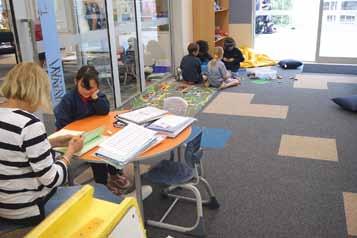
Worries stick. Let’s help our kids shake them off.
What is Pause Breathe Smile? It’s a mind health programme proudly funded by Southern Cross which equips Kiwi kids with the tools they need to navigate the ups and downs of life and set them up for a healthy future. Research shows Pause Breathe Smile improves focus and attention, helps develop conflict resolution skills, increases self-awareness and reduces stress for teachers. How do I get my school involved? Schools can register their interest by emailing info@pausebreathesmile.nz
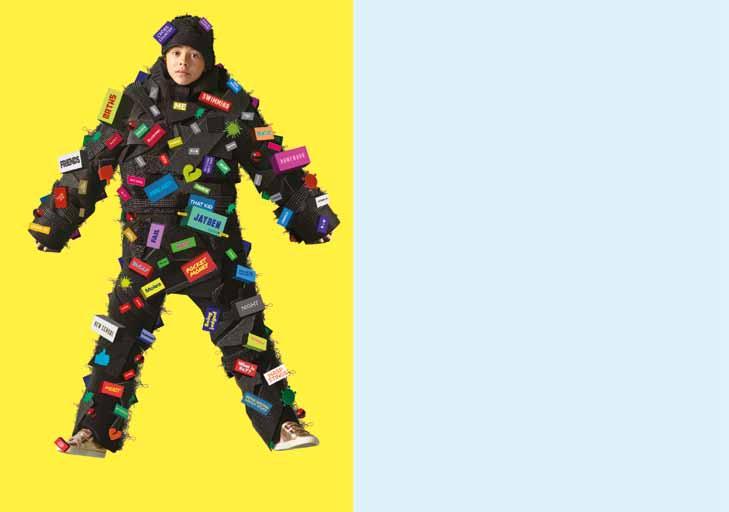
Visit www.pausebreathesmile.nz for information.
Delivered under licence from the

Stunning art work
that shines through. Mike insists that their aim is to achieve an equal experience for each child and so the school setting and environment must deliver that.
‘Each of our learning neighbourhoods has a collaborative space which we call “Kotahitanga”,’ says Mike. ‘This is a space for sharing and group discussion and so the teacher must be able to see all of the children’s faces and they must be able to see each other’s faces. That is why we created the double decked forum approach with semi-circular shaped furniture,’ he explained.
Each learning neighbourhood also has a “lounge” area and two unisex toilets. ‘You won’t find any toilet blocks in our school,’ smiles Mike.
The lounge area is a negotiable shared space between two learning spaces of differently aged children. ‘By sharing this lounge space children learn to engage in tuakana/teina relationships and be respectful of each other,’ explained Mike. ‘Some may be working on noisier recreational activities and others might be completing tasks that require concentration, so they all learn tolerance and consideration of others,’ he said.
Other features of learning neighbourhoods include an art studio, a kitchen, complete with cooking facilities and dining table, and an open porch with outdoor sink and woodwork area. The generous porch area is roofed and access is gained via glass sliding doors. It doubles as a space for the children’s bags and shoes.
‘We allow the children to store their art in the studio so that they can come back to revisit their work, refine and enhance it,’ explains Mike. ‘There are also planter boxes outside the kitchen areas, maintained by the children, so they can grow plants and herbs for their cooking classes. They share their cooking efforts at the dining table,’ he said, ‘and generally, there will also be some fresh fruit on the table to finish off the meal!’
The philosophy behind successful learning at Waimairi School has a distinct story behind it. The mantra for learning is detail, sequence and quality.
‘It all begins with Te Whāriki and the arts,’ says Mike. ‘Learning is developmental and so at years one and two, we focus on the arts to develop, sequence and detail,’ he said. ‘The children learn to sketch, with the guidance of an artist, and once they master detail and sequencing, that will lead to quality in other subjects such as writing, attacking maths problems and mastering reading,’ he explained. Learning content is not ignored at the lower levels, it simply isn’t the main focus.

Your management, teachers and students are your last line of defence against cyber security breaches.
Securing your IT networks and devices is no longer sufficient to protect your Institution from Cyber-attacks. Get fully managed cyber security awareness training so everyone is equipped with the knowledge to identify, report, and protect your Institution from Cyber-attacks!
Contact Eric Barrett for a FREE demo
Top NZ Education Technologies & Consulting Limited 027 579 1514 support@topnzetc.com topnzetc.com
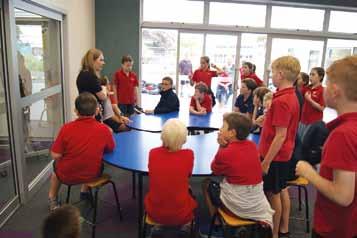
all eyes on the teacher for important lessons
continued on pg 20
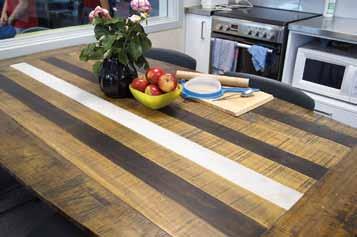
Playground Surfacing

The only 5-Star rated Playground Surfacing in New Zealand
Safe: Cushionfall® playground mulch is specially treated so it’s free from nails and splinters. Many cheaper or imported products aren’t nail-free or splinter-free. Long-lasting: tests have proven that Cushionfall® playground mulch actually becomes more effective over time. After 5 years it will be in better condition than ever!
Quick-draining: the children can start playing as soon as it stops raining. Wind-proof: Cushionfall® playground wood chips are shaped in such a way so that they’re not disturbed or blown around by the wind.
Colourful: available in 8 non-toxic, UV-resistant colours, Cushionfall® playground mulch makes playtime fun!
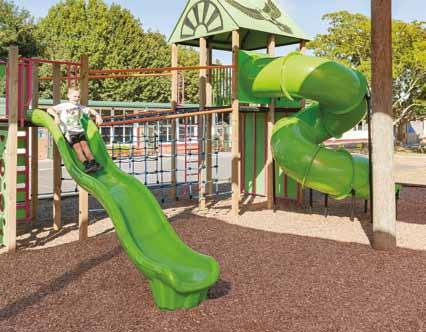
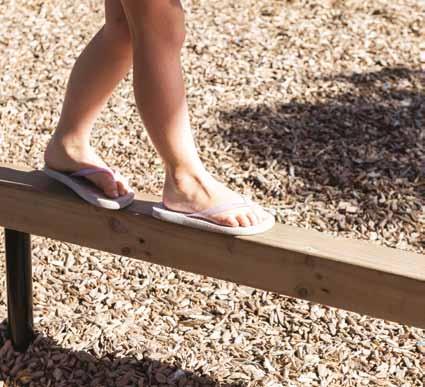
Ph: (09) 299 3999 Mob: 0275 299 399 info@reharvest.co.nz www.reharvest.co.nz
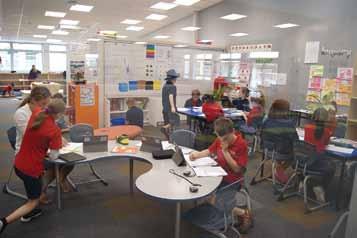
The learning neigbourhoods accommodate many different learning activities Different spaces for allow for different activities
The four rivers café is a popular gathering place for the community
‘By years three and four, the learning content grows and the reading, writing and maths ramp up, but we don’t let go of the all important arts foundation,’ says Mike. ‘The bonus is that the quality of the learning improves.’
Taking a walking tour of the school, it quickly becomes evident that the art-work, even at those early year levels, is stunningly good. At the higher levels, it becomes clear that the early emphasis on detail and sequencing does indeed lead to quality and excellence.
Art is not limited to painting and sketching. Children in the early year groups learn hand stitching to make simple textile articles. The older children have access to a sewing machines which introduces them to more sophisticated creative garments. As with everything, the detail and sequencing of these sewing activities are evident. ‘We have our own version of “wearable art”, Mike laughs, ‘and the kids really love that.’
The day I visit, a group in one of the lounge areas, is making a movie together, including creating their own set, from lego and other random objects they have collected up. ‘We take our time to get it right and make changes if something’s not working,’ says one youngster, reflecting the mantra of detail, sequencing, revision and enhancement. Meanwhile another group is chilling out, silently reading on couches.
Mike is very pleased with the progress that has been made, lifting achievement in all aspects of the curriculum. ‘We are beginning to see the pay off for children’s learning by adopting the detail, sequencing and quality approach to learning through art,’ he said proudly. ‘We have always seen our school learning as a six-year project, where learning is an uneven process and different for each child. That is why we never bought in to the national standards idea,’ he said. ‘Children are not standard, they are diverse.’
Diversity is very much in evidence at the high decile Waimairi school. ‘We are designated as high decile, but in reality, we have a mix of all deciles here, including a number of refugee children. This means that the children form friendships with kids who may not live in their immediate neighbourhoods,’ he explained. ‘In our school it doesn’t matter where you are from or what social class your family comes from, no child is disadvantaged here, and all cultures are valued,’ he said.
Amongst this diversity, as in many schools across Ᾱotearoa today, there are the seriously challenged youngsters who are


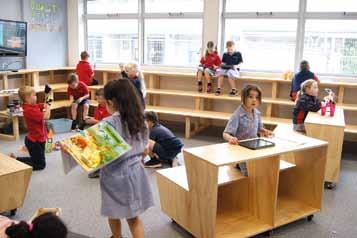

highly anxious, traumatised and may have The children will advance if the teachers are suffered a range of abuse in their lives. advancing. High quality PLD and forming
‘We have a novel way to help our kids relationships with curriculum experts is an who might be disruptive or have violent important lever. Release time doesn’t come outbursts at times,’ says Mike, as he cheaply but it is an investment Mike sees as introduces me to his trusty Collie dog, number one. That means being frugal in other Murphy. ways – for instance, my office furniture and
‘Murphy is an important staff member the furniture in the administration area all here,’ he smiles. ‘We call him our calming come from the Warehouse,’ he smiles. dog.’ He recognises that principals too need
Murphy follows Mike everywhere but PLD and favours a National Principals’ when he is at work, Murphy is in the Academy to achieve this. ‘We used to have Principal’s Office. ‘All the children know a leadership centre which was so helpful and trust Murphy, which is why he is such for pedagogical leadership and curriculum an asset for calming kids down when they advisors also played an important role,’ he have lost control,’ he says. ‘Murphy doesn’t said. ‘What we need to do is build the capacity judge or make demands. He just stays of principals through a credible academy led calm and warm,’ he says. by the profession not led by systems thinking.
I ask Mike what he is most proud of as School is a wicked complex organism, not a principal of Waimairi. He answers without hesitation. ‘It is the staff and teachers who make the getting the details of the set right is important for a good movie calm ordered one. It is chaotic complexity and what burns us out is the systematisation. The system won’t save you, its complexity theory difference for the children,’ he says. ‘My job is to make sure the that liberates you!’ vision is clear and research based and everyone has equitable access to the PLD and the tools they need for successful teaching As I thanked Mike and Murphy for an enlightening day, for and learning,’ he says. ‘We can achieve anything if we understand the wonderful new ideas, for allowing me to observe Waimairi why we are doing it and have what we need to achieve it.’ children at work and show me pedagogy in action, I couldn’t
PLD is a huge investment for his staff and he does not hold help but feel that with the right vision, leadership and attitude, back. ‘We give our teachers the very best PLD we possibly can and adversity really can be transformed into greater prosperity, try to remove all barriers that might inhibit their teaching efforts. happiness and success.
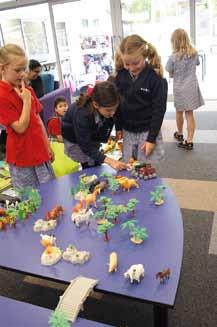
Proudly 100% Kiwi owned and operated, we are leaders in innovative learning environments. Specialising in quality NZ and Australian made furniture, we offer a wide range of products for all learning spaces, administration areas, and specialist areas. We can help you with entire school fit-outs, listening to what you need and delivering your vision. Exclusive suppliers of quality Sebel® products and NZ made furniture.
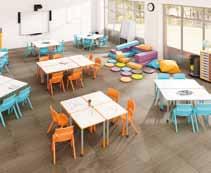
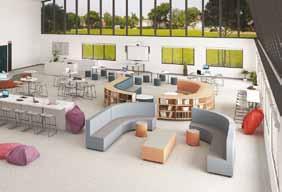
Visit us online @ distinction.net.nz or for a FREE consultation call 09 523 4092



